

Welcome to Clan Napier in North America
Greetings from Our Chief
My Kinsman,
I would like to welcome you to our flourishing Clan Napier in North America website. I very much hope that you will find it useful, informative, interesting and entertaining, I am positive that this is the way forward for our renowned Clan in the 21st century to maintain the link between the members of the greater Napier family, no matter where you live in the world. I am sure that in spirit of John Napier – alias John ‘o Logs – he would have been hugely impressed by the remarkable scale of our network and proud of what we have achieved.
I am sure all the members of the Clan Napier in North America continue to appreciate the help we received from the Edinburgh Napier University in establishing the original website. It was important in establishing the link between the University and the members of the Clan Napier, both in the UK and the USA.
To date, I am aware it is not easy to keep up with this website since the masses of information from the social media become so overwehelming. Despite this fact, I believe people are still very interesting in family history. So, we need to strive to keep this society together and move forward with confidence.
Once again, I trust and hope that the links between all our members, wherever you live, will go from strength to strength.
Yours very truly,
NAPIER and ETTRICK
June 2024
Our former chief Major the Rt. Hon. Sir Francis Nigel, 14th Lord Napier and 5th Ettrick, KCVO, DL wrote the message on the founding of the Clan Napier in North America on March 9th 1985:-
On the occasion of the founding of Napier Clan organisation in North Alabama, as your chief, send you fraternal greetings, and warmest good wishes for the success of your venture.
Our mottoes speak for themselves. SANS TACHE (without stain) and READY AYE READY.
Motto: Ready Aye Ready
Napier “Nae Peer” – No Equal
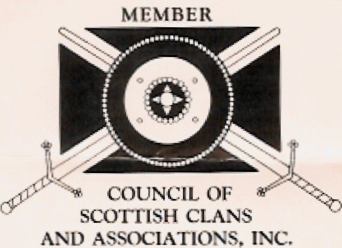
History
Origin of the Clan
There are multiple views on how the name Napier arose. The first is that a “naperer” is “a person in charge of table linen in a royal or manor house” and that the original Napiers could have been “naperers” from England. The other theory is that the name Napier is a derivative spelling of “Nae Peer.” In 1625, Sir Archibald Napier of Merchiston, the first Lord Napier, presented an affidavit to the College of Heralds, in which he described this origin of the name Napier, as having been bestowed by the king (probably Alexander II) on one Donald Lennox in recognition for acts of bravery. He states:
“After the battle as the manor is everyone advancing and setting forth his own acts the King said unto them “Ye have all done well but there is one amongst you who hath Na peer,” and calling Donald into his presence he commanded him in regard of his worthy service and in augmentation of his honour to change his name from Lenox to Napier, and gave him the lands of Gosford and lands in Fife and made him his own servant, which discourse is confirmed by sundry of my old evidencies and testimonies wherein we are called Lenox alias Napier.[1]
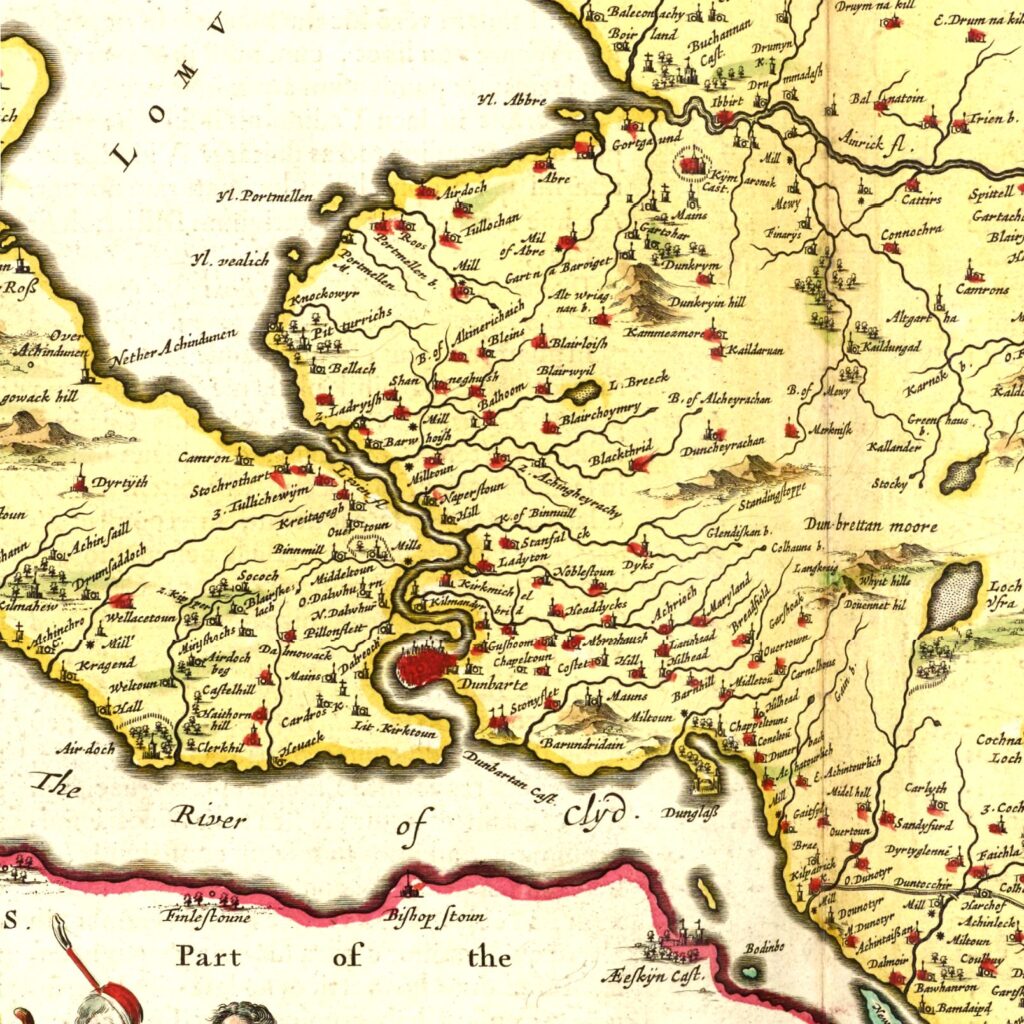

Current Historical and DNA research shows that it is unlikely that the Kilmahew line is paternally related to the Earls of Lennox as we don’t share Y-DNA with any of the associated clans of Clan Lennox such as Clan MacFarlane.
What we do know is that through Y chromosome DNA research the Napier Line associated with Dr. Patrick Napier has historic ties to a man most likely born in the West Yorkshire and Lancashire area around the year 1100.
This seems to follow the general trend of Anglo-Norman settlement of Scotland Under King David I of Scotland. Under King David Scotland saw a feudal transformation and migration of an aristocracy from Normandy and in our case knights from Northern England. Whatever the specific details of our historic origins are we find the earliest evidence of Napier’s in Scotland in the year 1243 where an Adam Napparius(Latin Variant of Napier) witnessed the ratification of the church of Lescelyn to the Abbey of Lindores. It is not known whether this man is an ancestor of ours but is quite possible. Our earliest genealogical ancestor John Napier was mentioned in a charter dated 1280.
During the Scottish wars of independence King Edward I of England compelled the Scottish aristocracy to swear feality to him in a Document called the Ragman Rolls. In this document dated 1296 Johan Le Naper del Counte de Dumbretan (John Naper of the County of Dumbarton) swore fealty to the Hammer of the Scotts. Two other Napier men also signed their names a Mateu le Naper of Aghelek and a John le Naper in Peeblesshire. The relationship of these three men to each other are not known but it is interesting that most of the early evidence for the Napier name comes from the East and north of Scotland away from the Lennox where our families roots were firmly established. It is possible that the name Napier entered Scotland from Lothian in the east and then around the end of the 1200’s our progenitor received land in Kilmahew after all the above statement of Sir Archibald Napier says that the King upon bestowing the name Napier gave him lands in Gosford and Fife in the same general vicinity of Adam, Mateu, and John of Peeblesshire.
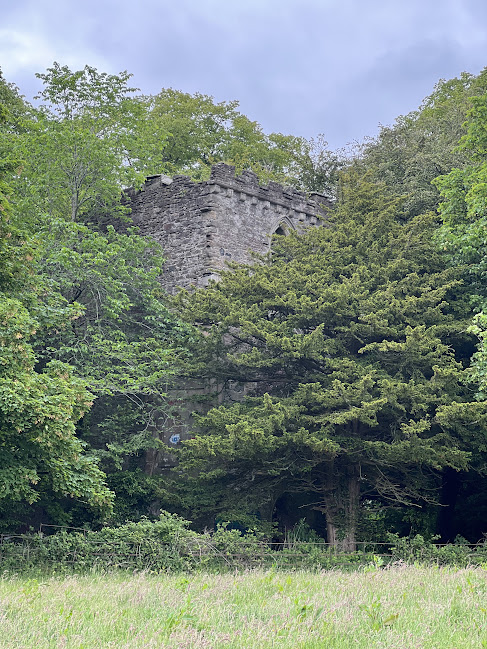

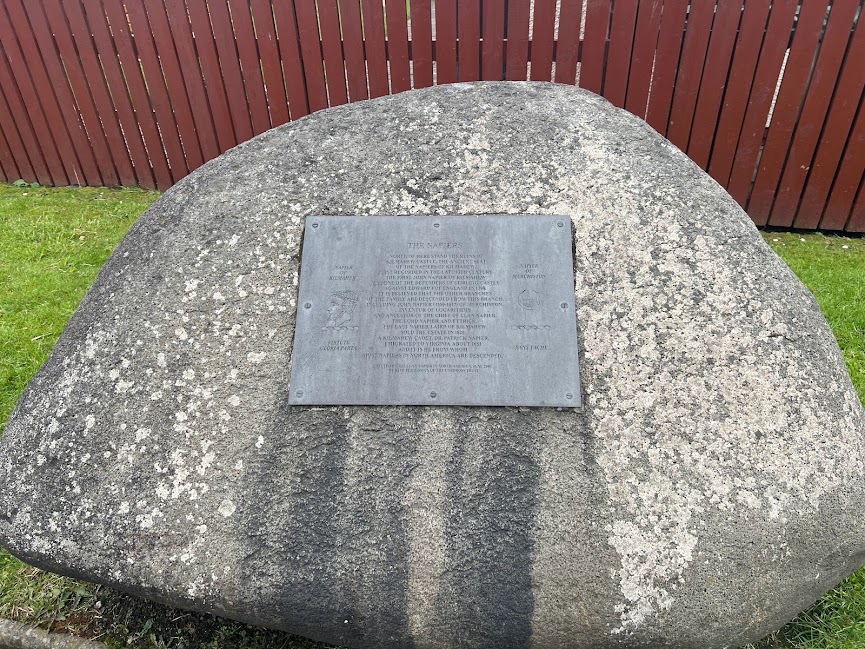

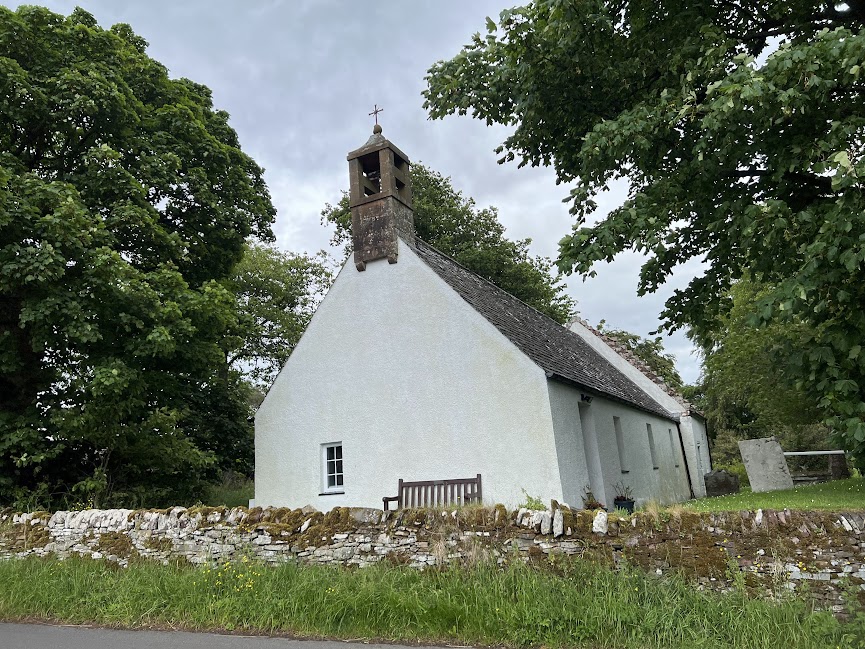
Napier family of Kilmahew written by John H. Napier and updated with new information about Patrick Napier of Virginia.
John Napier our first traceable ancestor, held the lands of Kilmahew, Dunbartonshire by 1294 from Malcolm, fourth Earl of Lennox. After King Edward I of England smashed the Scots host at Dunbar in 1296, The Earl of Lennox, John Napier, and the other Scots nobility, gentry and clergy had to sign fealty to Edward in the so-called Ragman’s Roll. However, Scots soon revolted against Edward and in 1304 John Napier was one of 24 heroic defenders of Stirling Castle that the aged English monarch besieged. After three months the garrison surrendered and our ancestor had to tramp south 400 miles to prison in Shrewsbury Castle, Shropshire on the Welsh border. After 13 months of imprisonment he was released, fined three years of his rent, and returned to the Lennox. He was succeeded by his son.
John Napier, second of Kilmahew, was cited for his service to Matthew fifth earl of Lennox, who was slain at Halidon Hill in 1333. Presumably this John and his son Duncan were those of that name servicing men at arms in the garrison of Edinburgh Castle between 1335 and 1340. He was succeeded by his elder son William who was slain and then by his younger son.
Duncan Napier, fourth of Kilmahew, also held the lands of Bonhill and Milton in the Vale of Lennox as well as buildings in Edinburgh, of which he was Burgess in 1373.
John Napier of Kilmahew, became a Burgess of Dumbarton in 1429 and by 1440 was succeeded in Kilmahew and other lands by his namesake son.
John Napier. About 1457 he was followed as Laird of Kilmahew by his son.
Duncan Napier in 1467 restored the Chapel of St. Mahew. His crypt may be seen there today. He was succeeded in Kilmahew first by his son James and then by his second son Robert.
Robert Napier might have been slain at Flodden Field in 1513, as his feudal lord, Matthew Earl of Lennox, was. He was succeeded by his son John.
John Napier, Laird of Kilmahew. This John Napier in 1531 received a grant of the island of Inchmoin (Inchmoan) in Loch Lomond from his kinsman Alexander Napier of Merchiston. This John Napier died in 1548 and his will is the first we have. He was succeeded by his son Robert as 13th Laird of Kilmahew. He died about 1561 and since his eldest son, also Robert, had died before him and the title went to the latter’s son, Patrick, a minor. Therefore, his guardian for eight years became his uncle Patrick Napier of Blackyard.
Patrick Napier of Blackyard, Tutor of Kilmahew. His namesake nephew Patrick succeeded as 14th Lord Napier Laird of Kilmahew and was later killed at Glenfruin when the MacGregors ambushed the Colquohouns and their adherents in 1603. Patrick the Tutor died in 1586 and we have his will. One of his executors was his kinsman John Napier, Laird of Merchiston, the future inventor of logarithms. The Tutor’s third son was Mungo Napier.
Mungo Napier, Burgess of Dumbarton born circa 1557 (St. Mungo, aka Kentigern, was the first Bishop of Glasgow and its patron saint). He sold property in Dumbarton to a brother in 1603 and disappears from Scottish records. The year is significant because that was when King James VI of Scotland succeeded his cousin Queen Elizabeth and went down to London as James I of England. He was accompanied by many Scots seeking advancement, including Mungo Napier’s kinsman Archibald Napier of Merchiston, son of “John o’ Logs” as a gentleman of the royal bedchamber and later, in 1629, first Laird Napier. I suspect that Mungo went down with him.
Patrick Napier, born about 1608, was apprenticed in London to become a barber surgeon in 1623. In 1628 he married Joan Wallis and in 1631 was admitted to the Barber and Surgeons Company of London. He must have entered the service of King Charles I because there is record of him in three royal parishes–Cheshunt Parish, Hertfordshire near the royal hunting lodge of Theobald, in St. Margaret’s, Westminster and St. Martin-in-the-Fields, London. Also, when King Charles belatedly went to Scotland in 1633 for his coronation as King of Scots accompanied by Archibald Laird Napier, Patrick Napier was also up there being invested as Burgess of Dumbarton by right of his father Mungo, hardly a coincidence. By 1649, the year that King Charles I was beheaded by the Puritans, Patrick Napier was on record as his barber, a trusted post. He survived Cromwell’s dictatorship and died just before the restoration of King Charles II and on November 24, 1659 he was laid to rest at St. Martin-in-the-Fields in London.
*Patrick Napier (circa 1643-1669), was apprenticed to Alexander Pennycuik of Edinburgh in 1649 likely a choice made in the aftermath of the execution of King Charles I. Alexander Pennycuik was surgeon-general of the Scots Army in the 3rd English Civil war. It is not known exactly when Patrick came to America, but it seems likely he came in the wake of the upheavals of the civil wars. There is a record in 1654 of a Patrick Napier being a witness for a Thomas Stanton in Maryland Certainly Patrick, our first Napier ancestor in America, was in Virginia by 1655 and became a chirurgeon in York country. There he married Elizabeth Booth the daughter of prominent Virginian residents Robert and Frances Booth. Patrick lived on Queen’s Creek, York County, Virginia, near what later would become Williamsburg and had a 1500-acre plantation in neighboring New Kent County. He died in 1669, leaving a young son.
Captain Robert Napier, Sr. born before 1668. He was a planter who owned more than 2,700 acres of land, an attorney and commander of a company of Virginia Rangers guarding the Indian frontier, as well as being a vestryman of St. Peter’s, New Kent, where George and Martha Washington were later married. He married Mary Perrin and they had seven children. Their four sons Booth, Robert Jr., Rene’ and Patrick would become the ancestors of most, not all, American Napiers.
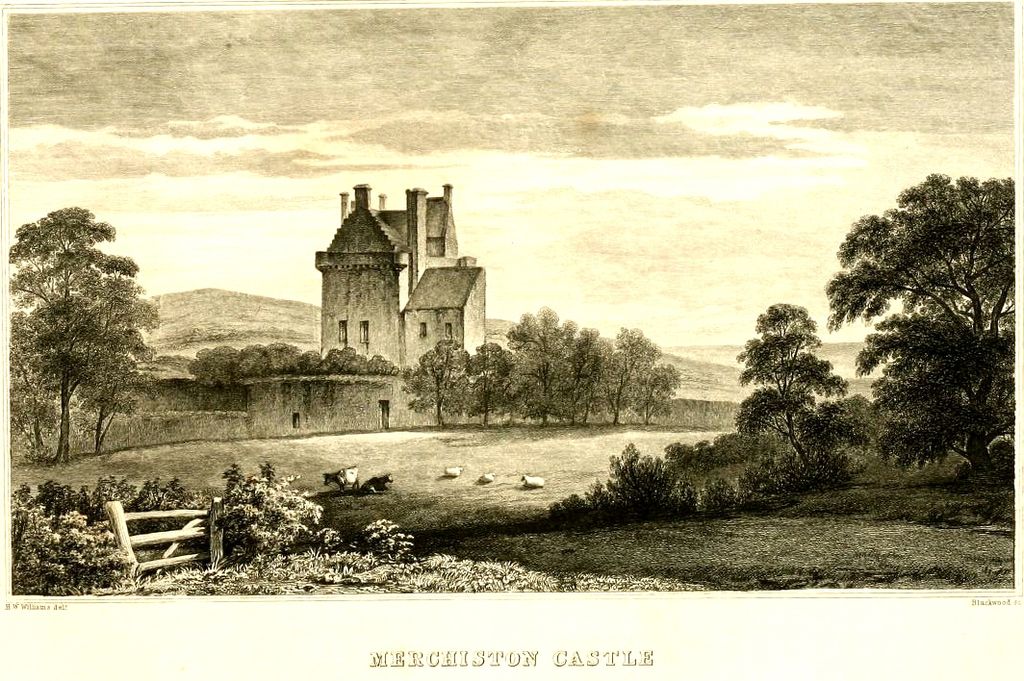



The Napier Family of Merchiston written by Charlie Napier updated and edited by Erik Napier
The exact kinship ties between this family and the Kilmahew family is not known at this time, but we know that there was one as both families refer to each other as kin in official documents. This family is the branch that is most well-known in the history books and the one that our Kilmahew ancestors received patronage from after the move to London following the accession of King James VI, I. This branch of the clan first appeared in Merchiston, near Edinburgh. The first Laird of Merchiston, Alexander Napier, obtained a charter to the lands of Merchiston in 1436. The Napiers of Merchiston would produce Provosts of Edinburgh, numerous admirals and generals, as well as John Napier, the 8th Laird of Merchiston, inventor of logarithms. Merchiston Castle in Edinburgh still stands as the centerpiece of Napier University’s Merchiston campus.
John Napier of Rusky, the 3rd Laird of Merchiston was killed, in service to the king, leading the Clan Napier at the Battle of Sauchieburn on June 11, 1488.
16th Century & Anglo-Scottish Wars
During the Anglo-Scottish Wars Sir Alexander Napier, the 5th Laird of Merchiston, led the clan when they fought at the Battle of Flodden Field in 1513, but he was there slain.
Alexander Napier, the 6th Laird of Merchiston died when the Clan Napier fought against the English at the Battle of Pinkie Cleugh in 1547.
17th Century & Civil War
Archibald Napier, 1st Lord Napier and 9th Laird of Merchiston, fought in the Battle of Philiphaugh in 1645. He was over 70 years of age. Gentleman of the Privy Chamber to King James VI, Treasurer-depute of Scotland from 1622 to 1631 and Lord of Session in 1623.
In addition, he was one of the Bearers of the Canopy in the State Procession of 1633. He was raised to Baronet of Nova Scotia on 2 May 1627 and was knighted by King Charles I of England with the title Lord Napier of Merchiston on 5 May 1627.
In 1640 he supported King Charles I against the Covenanters with his son, Archibald. Napier’s son escaped, but Lord Napier and the rest of his family were imprisoned in Edinburgh Castle and fined £10,000. They were transferred to Linlithgow, but Lord Napier’s son Archibald managed to organize their escape. Both Lord Napier and his son joined the Marquess of Montrose (Lord Napier’s brother-in-law) and fought with him at the Battle of Philiphaugh, though Lord Napier was over 70 years of age. Montrose and his followers lost the battle at Philiphaugh and Montrose escaped to the Highlands with Lord Napier and his son. Lord Napier died at Fincastle, in Perthshire, in November 1645.
Archibald Napier, 2nd Lord Napier and 10th Laird of Merchiston, also took a prominent role in the English Civil wars. As stated above he fought alongside his father and the Marquess of Montrose. He traveled overseas with Montrose to seek recruits and assistance. When Montrose returned Archibald Napier stayed in Holland with the exiled court of Charles II. Montrose was executed in 1650 an three years later Archibald took part in a last ditch Royalist effort called the Glencairn Uprising and as a result in 1654 Archibald was expressly excluded from the act of pardon issued from Cromwell.
Archibald Napier, 3rd Lord Napier and 11th Laird of Merchiston died without issue passing the title along the female line to his sisters son who also died without issue. The title of Lord Napier then passed to Archibald’s sister Margaret. Margaret’s daughter Elizabeth who married a Sir William Scott , Second Baronet of Thirlestane, Ettrick. Their son Francis succeeded his Grandmother as the 6th Lord Napier. It is through this lineage that our current head of our Clan descends.

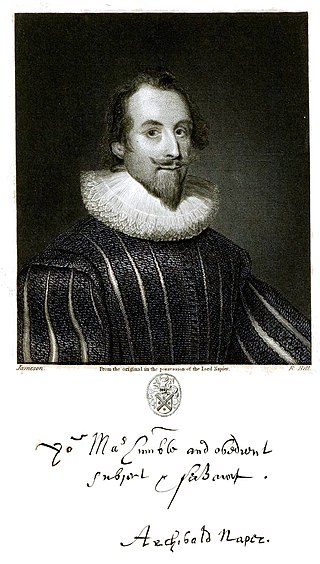

Lord Francis Napier and his daughter, Honorable Sophie.
Clan Napier is a small clan with no septs. We are “all sorts of conditions of men” and women, Napiers (or variants) by name, descent or adoption in the United States and Canada.
Clan Napier in North America (CNNA) was organized in 1985. Its purposes are charitable, educational, historical, genealogical, commemorative, social and convivial. The Chief of the Name and Arms of Napier appoints his Lieutenant for North America. Members elect other officers every three years at the Annual General Meeting.
__________________________________________
Forest Lodge, The Great Park, Windsor
On the occasion of the founding of Napier Clan organisation in North Alabama, as your chief,
send you fraternal greetings, and warmest good wishes for the success of your venture.
Our mottoes speak for themselves. SANS TACHE (without stain) and READY AYE READY.
March 1985
Our chief, Maj. The Rt. Hon. Lord Napier and Ettrick KCVO, DL, then H.R.H. Princess Margaret, Countess of Snowdon’s Private Secretary and Comptroller, wrote the above message on the founding of the Clan Napier in North America on March 9, 1985 at Kilmahew, Ramer, Alabama.